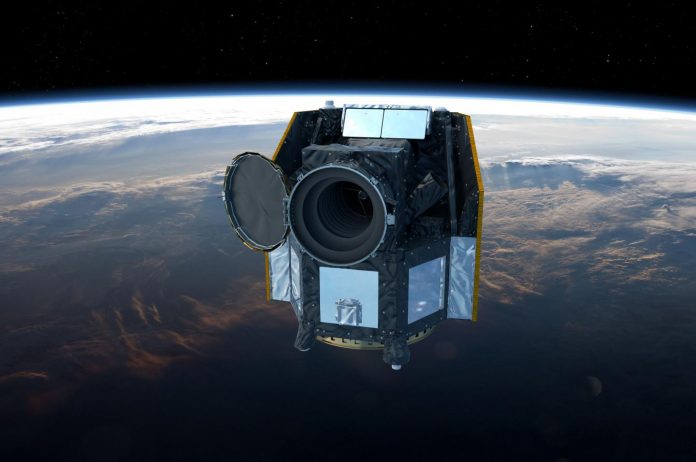The results of CHEOPS, the first ESA mission dedicated to characterising known exoplanets, have been published in Astronomy & Astrophysics.
CHEOPS was developed as part of a partnership between ESA and the University of Bern, Switzerland. The consortium of more than a hundred scientists and engineers from 11 European states was involved in a five-year construction project for the satellite. Using data from CHEOPS, scientists have recently carried out a detailed study of the exoplanet WASP-189b.
WASP-189b orbits the star HD 133112, one of the hottest stars known to have a planetary system. “The WASP-189 system is 322 light years away and located in the constellation Libra (the weighing scales),” explains Monika Lendl, lead author of the study from the University of Geneva, and member of the National Centre of Competence in Research PlanetS.
Monika Lendl further explains that planetary objects like WASP-189b have a permanent day side, which is always exposed to the light of the star. This means that its climate is completely different from that of the gaexos giants Jupiter and Saturn in our solar system.
Lendl said: “Based on the observations using CHEOPS, we estimate the temperature of WASP-189b to be 3,200 degrees Celsius. Planets like WASP-189b are called ‘ultra-hot Jupiters’. Iron melts at such a high temperature, and even becomes gaseous. This object is one of the most extreme planets we know so far.”
WASP-189b’s solar system
When a planet passes in front of its star as seen from Earth, the star seems fainter for a short time, a phenomenon called a transit. Lendl explains: “Because the exoplanet WASP-189b is so close to its star, its dayside is so bright that we can even measure the ‘missing’ light when the planet passes behind its star; this is called an occultation. We have observed several such occultations of WASP-189b with CHEOPS.”
Willy Benz, professor of astrophysics at the University of Bern and head of the CHEOPS consortium, said: “We also found that the transit of the gas giant in front of its star is asymmetrical. This happens when the star possesses brighter and darker zones on its surface. Thanks to CHEOPS data, we can conclude that the star itself rotates so quickly that its shape is no longer spherical; but ellipsoidal. The star is being pulled outwards at its equator.”
The star which WASP-189b orbits is considerably larger than our Sun and more than two thousand degrees Celsius hotter. Due to its high temperature, the star appears blue and not yellow-white like the sun.









